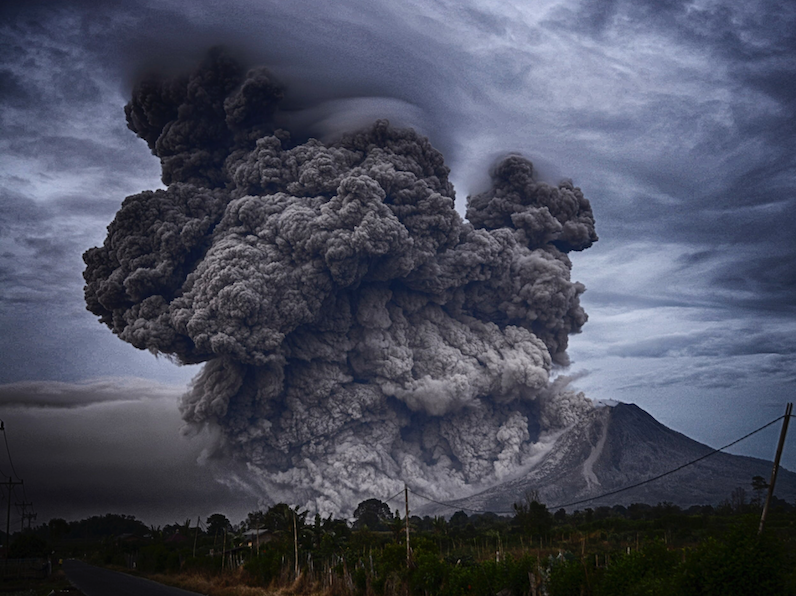Update on the Aftermath of St. Vincent’s La Soufriere Eruption
Photo courtesy of Unsplash
written by Tiara Jade
On April 9, a series of explosive eruptions from the La Soufrière volcano in St.Vincent took place, displacing 20% of the island’s population.
After being dormant for 42 years, La Soufrière began erupting, sending ashes over various parts of the island. Experts said the first explosion shot an ash column 32,000 feet in the sky and the majority went northeast into the Atlantic Ocean. Heavy ash blanketed the surrounding communities and made some evacuations difficult due to low visibility.
Several neighbouring islands including Barbados and St. Lucia prepared for light ashfall as the 4,003 foot volcano remained active, exploding twice more the same day. La Soufrière last erupted in 1979, and before that, in 1902, killing roughly 1600 people.
[Additional Read: Nadia Huggins on Inspiration and Her Powerful Connection to St. Vincent]
An estimated 20,000 people have been displaced from their homes, requiring humanitarian assistance. The series of eruptions caused damage to buildings, disrupted water supply and greatly damaged the agriculture industry, leaving residents with little option but to stay at shelters.
At the end of April, St. Vincent was hit with heavy rainfall, furthering the damage by causing major flooding, landslides and volcanic mudflows. There have been 30 identifiable eruptions since early April; the violence hazard alert level was just downgraded from red to orange on May 6.
Prime Minister Ralph Gonsalves is now trying to close some of the 80 plus shelters in the country, allow residents of the orange zones to return home and offering food packages and stipends. The food packages contain enough supply to last two weeks and the stipend, offered to farmers, of EC$150 (US$55.50) was offered at the beginning of June.
For some orange zone residents who have already moved back, complaints of ash in roads, sports fields and playgrounds have been plenty as much of the neighborhoods haven’t been cleaned. Red zone communities are still off-limits for residents, but people have been allowed back to clean their homes and care for any animals.
According to the University of the West Indies Seismic Unit, La Soufrière continues to be in a state of unrest and can become highly active again with little or no warming.
Neighboring countries have stepped up to offer aid and financial support since the eruption. Prime Minister Timothy Harris of St.Kitts and Nevis pledged $1 million in disaster relief and Barbados deployed members of its Defence Force to deliver UNICEF relief supplies.
Barbados, St. Lucia, Antigua and Grenada agreed to accept evacuees with empty cruise ships prepared to transport them.
The United Nations also launched a $29 million global funding appeal which for countries affected by volcano eruptions. The fund has now reached 31% of their goal (approximately 9.1 million). The Biden administration pledged $3 million to help support the appeal as well as the European Union, Governments of Canada, Spain. Germany, Australia and more. Despite the help that has been offered, the COVID-19 pandemic has made efforts difficult.
Prime Minister Ralph Gonsalves has stated that those wishing to board cruise ships offered by neighboring islands must be vaccinated before doing so as required by the nations. St. Vincent hotels turned into emergency shelters are also asking that people be vaccinated. Additionally, June is the start of hurricane season and the island could see more damage done as a result of the storming weather. Volcanologists have predicted that large mud slides, containing fast moving mixtures of water, debris and ash are highly likely to take place. Residents have been advised to stay away from any valleys close to the volcano.
Some organizations have begun fundraisers and initiatives to collect much needed money and supplies the island is in need of. Community organizations such as The Caribbean Diaspora Disaster Relief and Recovery Coalition in New York has held an ongoing series of initiatives called Caribbean Days of Giving to collect items across the five boroughs. The Saint Vincent Volcano Disaster Relief GoFundMe by Invest Caribbean and the The Ritzury Group are focusing their donations on some of the bigger issues such as housing, relocation, clean-up efforts, and humanitarian aid.
Scientists are still on the island actively monitoring the volcano for any future activity.

